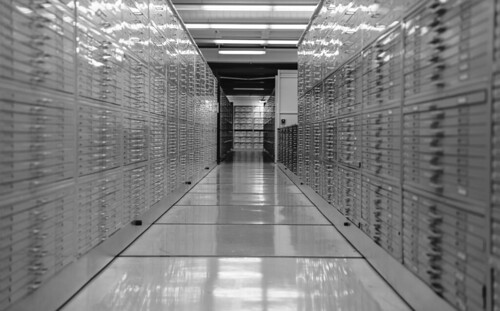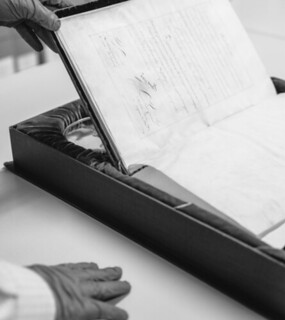
PREV ARTICLE
FULL ISSUE
PREV FULL ISSUE
DIGITIZING THE NATIONAL ARCHIVESElsewhere in this issue we discussed the Internet Archive and its role in enabling the Newman Numismatic Portal to digitize and store a vast trove of numismatic literature. This excellent Washington Post article takes a look at digitization at the U.S. National Archives (where NNP and Roger Burdette are finding a gold mine of information, much never before touched or seen by numismatic researchers. -Editor NARA Chief Innovation Officer Pamela Wright, a graduate of the University of Montana, grew up on a ranch outside Conrad. "My job," she explained, "is to find the most efficient and effective ways to share the records of the National Archives with the public online. NARA has been in the business of providing in-person access to the permanent federal records of the U.S. government for decades, and we are pretty good at it." She added, "We are still expanding and improving our digital offerings" — so far, about 300 million of NARA's more than 13 billion records have been scanned and posted to the internet — "but now my family in Montana can easily access census records, military records and many other pertinent records from home." It makes a weird kind of sense that the government worker who understands the value of providing online advice and information to far-flung Americans, and who is driven to connect the citizens of the hinterlands to their own stories as told in our collective federal records, is a woman whose hometown is a 32-hour drive from a reference desk in D.C. Every document, map, photograph, recording and film in the National Archives that Wright and her colleagues have scanned and transferred to the internet — accessible from a laptop in Lubbock or a smartphone in Sitka — makes the agency more democratic and more fair, which means the country is, too. One of the Archives' prized possessions refers to this time-consuming drudgery as forming "a more perfect union."
In the NARA vault, we also glanced at the Homestead Act, signed by Abraham Lincoln in 1862 — a leg up for future settlers like her Norwegian American grandfather and an irrevocable setback for the continent's original inhabitants. If National Park Service estimates are correct, more than one-fourth of all Americans descend from homesteaders, including both of Montana's U.S. senators, Democrat Jon Tester and Republican Steve Daines. As NARA's first chief innovation officer, Wright explained, "my role has been to ignite a culture of innovation across the agency, to nurture new ideas and to incorporate emerging technologies in order to better share our records with the public. For example, we worked with Wikipedia to put thousands of digital copies of our records on their website. This resulted in billions of views by people who may never visit the NARA website, let alone one of our buildings." Roger Burdette adds: "To me, the greater value is in digitizing (and where necessary transcribing) the routine government business documents. The "flashy" items such as the Louisiana Purchase are often end-products --- the results. The routine materials let us see how these products developed and were finalized. "With US Mint materials, NNP's digitization programs are the first and only extensive attempt to dig into historical background of well-known events, and to expose the unknown to examination. The results are that one no longer has to sift through other peoples' opinions to learn what happened." That looks like a medal in the box holding the Louisiana Purchase. Can anyone identify it for us? Where and when was it struck? -Editor
To read the complete article, see:
Wayne Homren, Editor The Numismatic Bibliomania Society is a non-profit organization promoting numismatic literature. See our web site at coinbooks.org. To submit items for publication in The E-Sylum, write to the Editor at this address: whomren@gmail.com To subscribe go to: https://my.binhost.com/lists/listinfo/esylum All Rights Reserved. NBS Home Page Contact the NBS webmaster 
|


